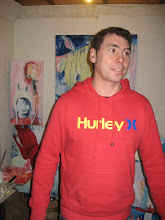THE POST MODERN CONDITION
Jean-Francis Lyotard, “Answering the Question; What is Postmodernism?”, trans. Regis Durand. “The Postmodern Condition: A Report on Knowledge”, Minneapolis: University of Minneapolis Press, 1984, pp. 71-82.
What is postmodernism? Surely postmodernism is part of the modern and a work can only become postmodern if it is first modern.
‘Modernity, in whatever age it appears, cannot exist without a shattering of belief and without discovery of the “lack of reality”, and the invention of other realities’(77). New rules have to be made to replace those that have been broken. This is what Lyotard refers to as a Grand narrative or Meta narrative.
Modernism lessened illusionism in painting and created new objects and ways of seeing them. Take Picassos Les Demoiselles d'Avignon painted in 1907. It shows a refusal to comply with historical methods of representation. Perspective has been abandoned as can be seen in the face of the figure on the bottom right which is seen from two views. That and the face above it are influenced by African masks, shattering the illusion of the ‘civilised’ and the ‘primitive’.
In the post modern condition the grand narrative has lost its credibility as culture takes on a flatness. The level of inquiry becomes cynical, what use is this? Parallel knowledge’s, takes over, in what Lyotard refers to as a ‘paralogy’.
Knowledge – science, technology and the arts, has undergone a change of status in the modern era. Lyotard pointed the figure at science. Science has become a knowledge commodity, involved with language. We believe in the truth of science. Science has freed the people. But, how, he argues do we know what’s true?
Therefore science based enlighted rationalism, reason truth and falsehood gave way to postmodern scepticism. This was to happen alongside capitalism, prosperity and widespread development in the visual arts. In the postmodern condition within science you cannot find truth. Humanity and beliefs of faith are questioned by postmodernism.
Postmodernist art embraces all manner of styles, asking questions about essence. Robert Rauschenberg began to explore this as he bought the real world into painting in his combines.”Rauschenberg paved the way for new possibilities, creating a space between painting and sculpture and between performance and object. In the wake of this artistic breakthrough, pop art, Happenings, performance art, and installation emerged.”1. These movements deconstruct and calls meaning into question.
Lyotard is in fact a modernist at heart. To state the end of the Meta narrative is a Meta narrative in itself. He goes on to concede that within the modern is the postmodern. “Postmodernism thus understood is not modernism at its ends but in the nascent state, and this state is constant”(79).
1. Jeremy Strick, ‘Robert Rauschenberg, combines’, ed. Jane Hyun, Germany: The Museum of Contemporary Art Los Angeles,2005.
Subscribe to:
Post Comments (Atom)


Hey Hamish
ReplyDeleteI like your connection to Rauschenberg in this entry. His collage works are definitely in stark contrast to the style of works that embody modernism.